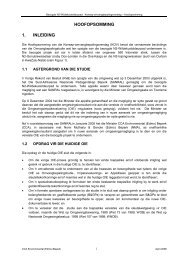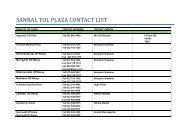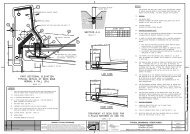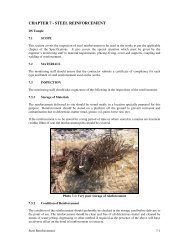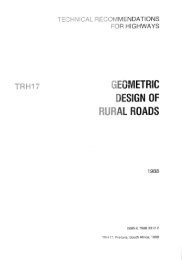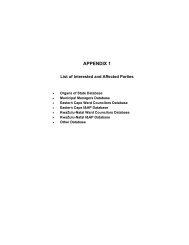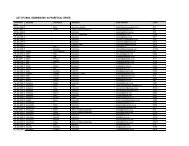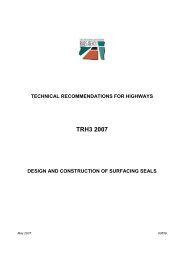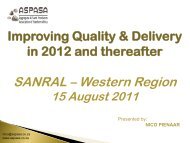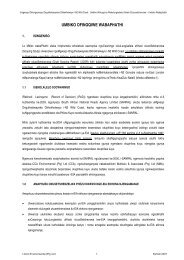SAPEM Chapter 2 - Sanral
SAPEM Chapter 2 - Sanral
SAPEM Chapter 2 - Sanral
Create successful ePaper yourself
Turn your PDF publications into a flip-book with our unique Google optimized e-Paper software.
South African Pavement Engineering Manual<br />
<strong>Chapter</strong> 2: Pavement Composition and Behaviour<br />
10. MATERIAL SCIENCE<br />
To be able to model material and pavement behaviour in any detail, fundamental response models can be used.<br />
There are three fundamental types of theoretical material responses used to model material behaviour applicable to<br />
pavement engineering:<br />
Elasticity<br />
Plasticity<br />
Viscosity<br />
There are very few road building materials that follow one discrete mode<br />
of response. The response models often need to be combined to model<br />
material behaviour more accurately, as shown in the examples below:<br />
Elastic material behaviour: cement or concrete<br />
Elasto-plastic material behaviour: granular materials<br />
Visco-elastic material behaviour: bituminous materials<br />
Visco-elasto-plastic material behaviour: asphalt<br />
The basics of these response models are described below. Thereafter, their application to granular, cemented and<br />
bituminous materials is explained.<br />
10.1 Elasticity<br />
Elasticity Symbol<br />
Elasticity is represented by a spring.<br />
When a load is applied to a material it deforms. Elastic behaviour occurs when the load is removed and the materials<br />
completely recover the deformation back to the original geometry of the material, as shown in Figure 25.<br />
Load<br />
Time<br />
Displacement<br />
Time<br />
Figure 25. Elastic Response to a Load, Sustain, Unload Cycle<br />
Linear elastic behaviour implies that the relationship between stress and strain is linear. According to Hooke's Law, a<br />
simple relationship exists between stress and strain for linear elastic behaviour. This law states that the slope of the<br />
stress-strain relationship reflects the material stiffness or Elastic Modulus, also known as Young’s Modulus, see Figure<br />
26, and Equation (4).<br />
Section 10: Material Science<br />
Page 28





